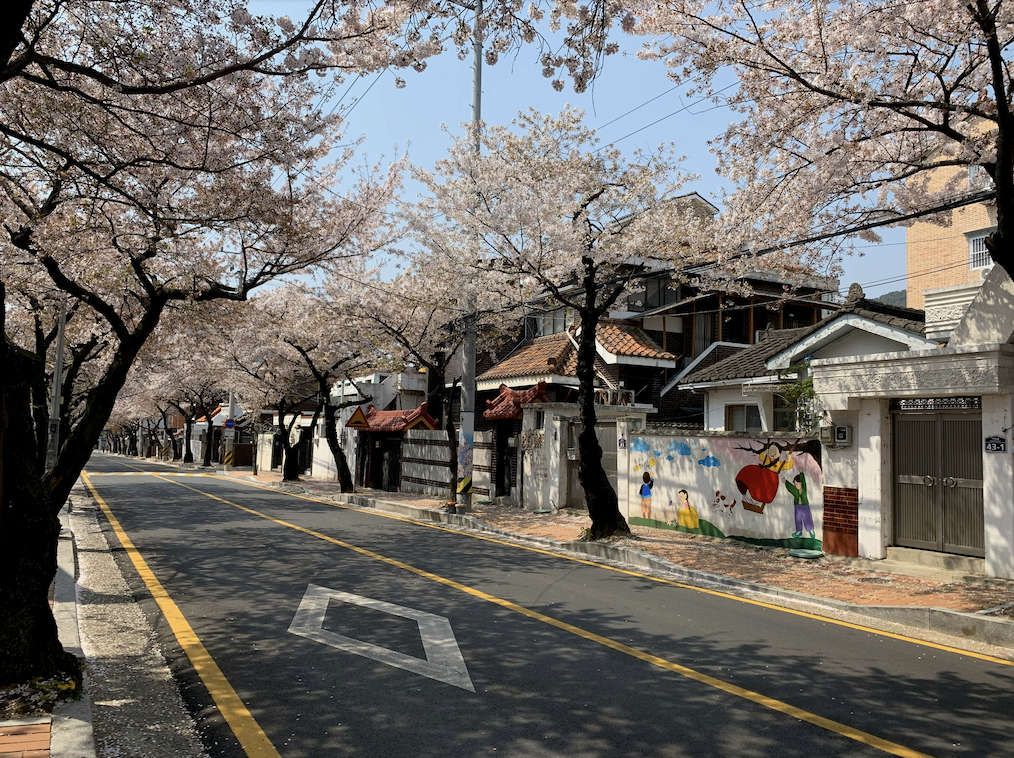From mid-March to early April, cherry trees across South Korea bloom in a stunning display of pink and white flowers renowned for their ephemeral beauty. Within two weeks of blooming, the cherry blossoms, known in South Korea as beot-kkot (벗꽃), start to lose their petals and wither.
It is perhaps their fleeting nature that makes the beot-kkot season such a beloved time. During these few weeks, families, friends and romantic partners can enjoy walking and picnicking under the trees, according to BBC News writer Yashi Banymadhub.
Forbes writer Sandra MacGregor explores some of the most famous sites in South Korea to see cherry blossoms. One is Simni Cherry Blossom Road, found in the village of Hwagae in Hadong County. It is the origin of a legend that if romantic partners walk along the road holding hands during the cherry blossom season, their love will last a lifetime. Another is Gyeongju, the capital city of the Gyeongsang Province, where the annual Gyeongju Cherry Blossom Festival takes place.
Koreans largely agree that Jeju Island is the best place to enjoy the cherry blossom season. The main reason for this is that the island is home to the king cherry, a variety of cherry trees native to South Korea.
However, the presence of the native species has become one of many sources of deep contention between South Korea and Japan, whose relationship has long been marred by a painful history. Part of the ongoing effort by Koreans to reclaim their history and expose the truths of Japanese colonialism revolves around establishing the validity of their native flora and fauna.
The commonly known Japanese cherry blossoms (sakura) can be found throughout South Korea. They are indeed native to Japan, but they are just one variety of the species, known as the Yoshino cherry tree. According to New York Times writers John Yoon, Mike Ives and Hisako Ueno, the much lesser-known Korean cherry blossoms are the king cherry variety, “distinguishable by the lack of hair on their buds.”
In his 2020 book Seeds of Control, in which he explores Japanese forestry practices in colonial Korea, David Fedman explains that Yoshino cherry trees were planted throughout the peninsula to “instill cultural refinement” in the Korean people. This was part of a greater effort to achieve complete assimilation of Koreans into Japanese culture—a “cultural genocide” that involved the systematic, and often violent, repression of indigenous belief systems, practices, cultural icons, consumption of traditional foods and use of the language.
While king cherries grow naturally throughout Jeju, including in 235 areas on the Hallasan volcano located on the island, there are no wild habitats for the tree anywhere in Japan, as stated in a KBS News report. Furthermore, the origins of the king cherry have been confirmed by DNA analyses conducted by the Korea National Arboretum as well as studies by American plant taxonomist Seung-Chul Kim.
For Koreans, the acknowledgment of their native species by the scientific community is one more step toward reclaiming their heritage and rejecting the influences of a devastating colonial history. According to Yoon, Ives and Ueno, ecologist Shin Joon-Hwan and his advocacy group plan to replace all the Yoshino cherry trees in South Korea with king cherries by 2050. By then, Shin says, the trees that were planted by colonizers several decades before will have reached the end of their lifespan, and hopefully, all lingering symbols of colonialism will cease to exist.
Visual Credit: Jean-Pierre Tran on Unsplash

Comments are closed.